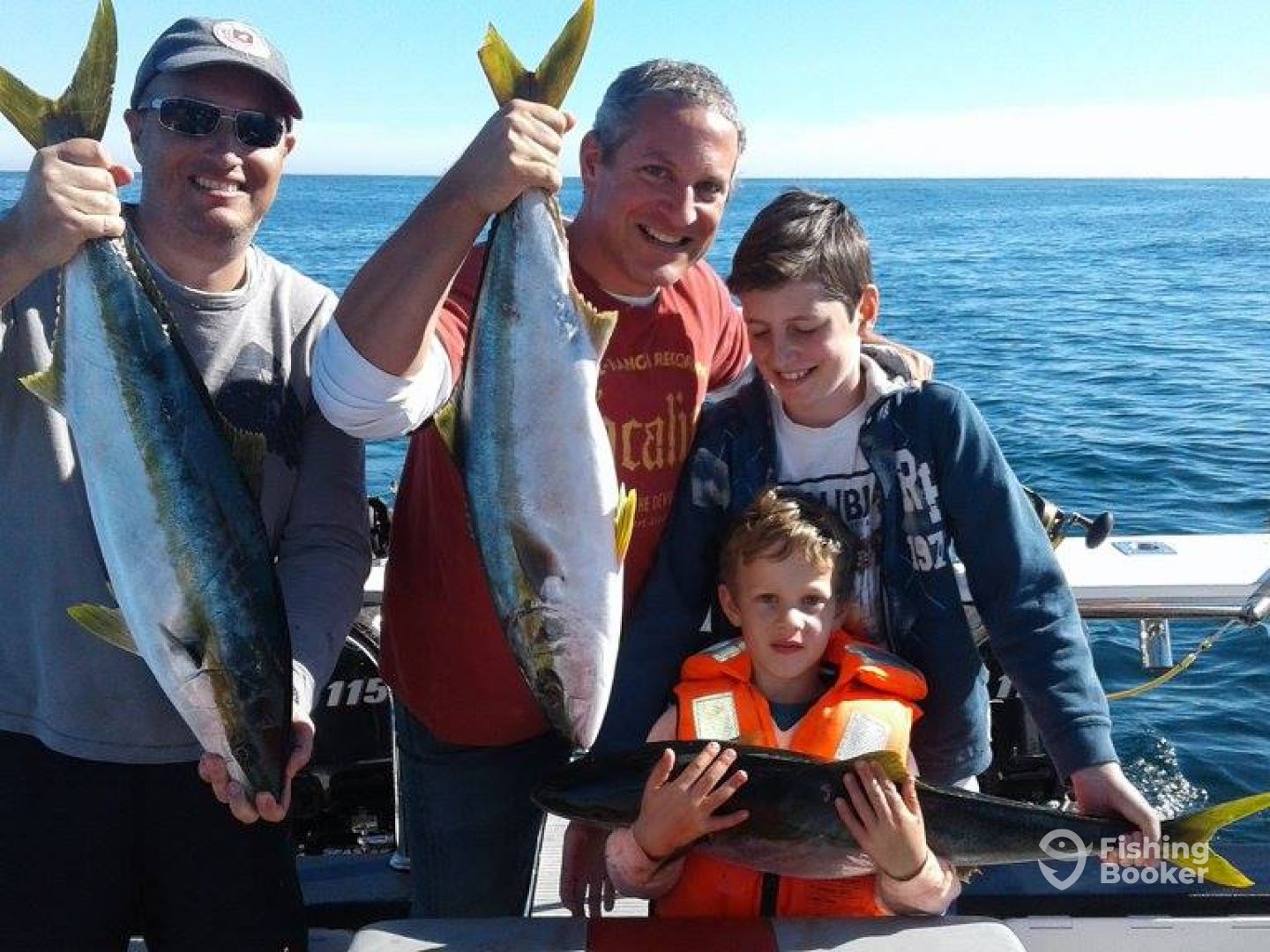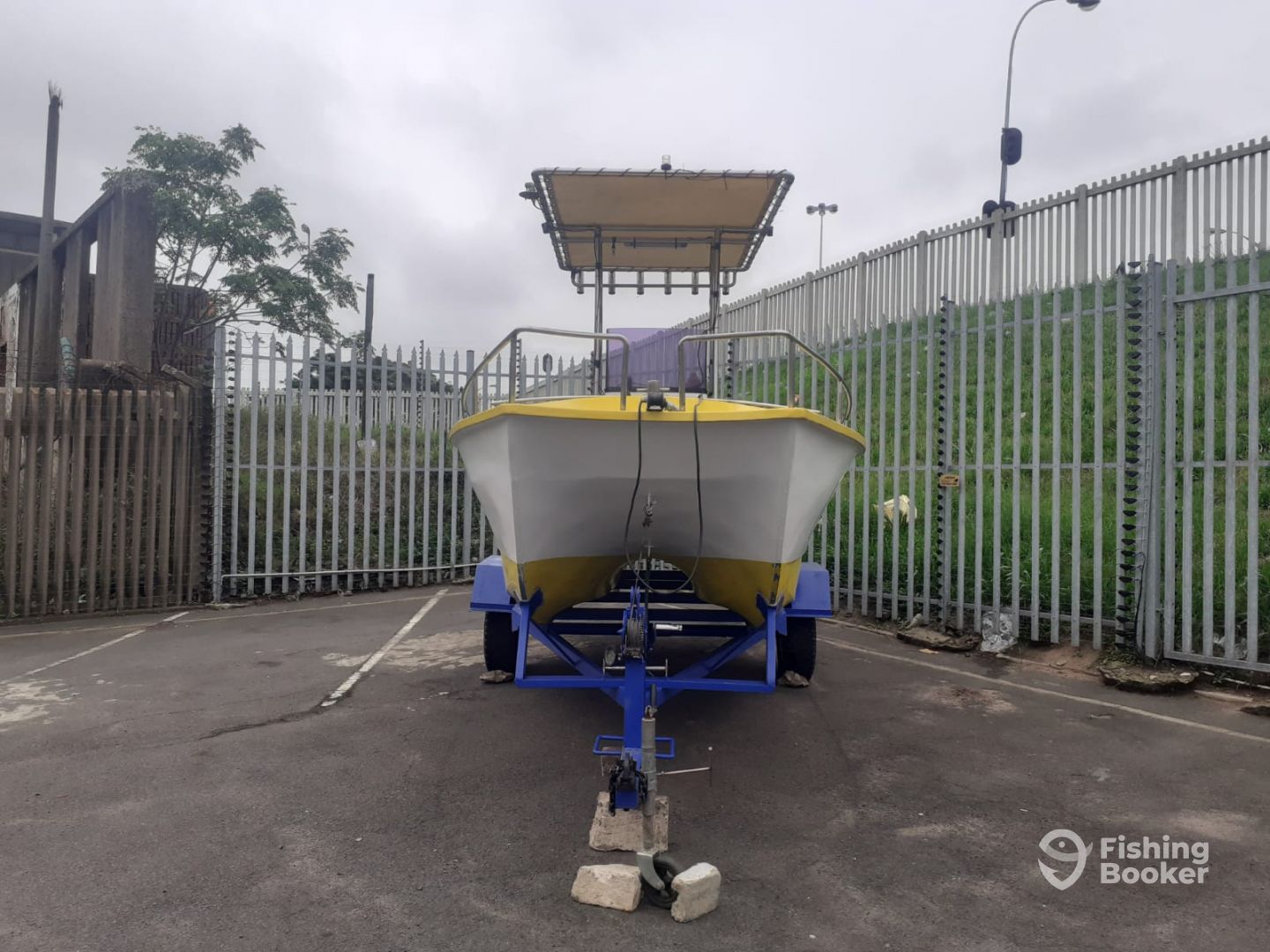Europe has Carp. America has Bass. In Africa, it’s all about Tigerfish. These toothy terrors are most famous in the Zambezi basin, but they’re actually found all across the continent. In fact, the Tiger fishing South Africa has access to is majorly underrated. Today, we’re here to show you why.

South Africa doesn’t have the biggest Tiger fishery. It doesn’t even have the biggest fish – especially compared to their giant cousins in the Congo. However, what it does have is some incredible angling with easy access and some stunning views to round things off. Sound like fun? Yes. Yes it is.
Why Tigerfish?

Before we jump into the specifics, it’s worth explaining what makes the African Tigerfish so special. It’s actually pretty simple: They’re underwater bullets with armored scales and a mouth full of razor sharp daggers. Oh, and they’re also really fun to catch.
Tigerfish can dent lures, bite through leaders, and empty spools at an incredible pace. On top of all that, they’re unpredictable – spooky one minute, headstrong and aggressive the next. Throw in some aerial acrobatics and seriously good looks, and you’ve got a fish you could spend your whole life catching.
South Africa’s Tigerfish average around 1 kilogram (2.2 pounds) and those weighing 4 kilograms or higher are considered a real trophy. Even so, these are not fish to be taken lightly. Tigerfish are known for their explosive hits and powerful runs. Anyone who’s battled Bonefish knows the punch that a small package can pack, and Tigers have a mean right hook.
How to Go Tigerfish Fishing in South Africa

The best way to go after Tigerfish is on a boat. Jozini is a vast body of water and you often need to cover a lot of it on the hunt for fish. Luckily, there are plenty of charters and lodges nestled around the lake.
Tiger fishing is a fly angler’s dream. People travel from around the world to take on these fanged monsters and they’re very rarely disappointed. The fly bite is best in early spring, when the water’s still clear but is starting to warm up. The river below the dam wall also offers clear water and excellent fly fishing, even in the heat of summer.
Fly fishing not your thing? Not a problem. You can also get great results with conventional or spinning gear. Tigerfish will take a variety of lures with equal enthusiasm, although you should leave your soft baits at home if you ever want to use them again. Trolling and live bait fishing are also effective tactics, especially when the water’s too cloudy to sight cast.
However you fish, a few things remain the same. Tigerfish move in packs, especially when they’re small, so don’t be surprised by double or even triple hook-ups. However, once you’ve worked an area for a while, it’s best to move on. Tigers get spooked if there’s too much activity in one place.
South Africa Tigerfish Fishing Spots

You can’t catch Tigerfish just anywhere in South Africa. The only place you’ll find them is in the east of the country, near the border with Mozambique and Eswatini. They live in two rivers, the Pongola and the Komati, and the Pongola offers by far the best action. The very center of this action is Lake Jozini, also known as Pongolapoort Dam.
Jozini is South Africa’s fifth-largest reservoir (or “dam,” as they’re called here). It holds a wide mix of species, from Carp and Catfish to Tilapia and even Largemouth Bass. However, it’s the Tigerfish that people come for. They crowd the shallow bays and steep dropoffs along the edge of the dam, as well as in the river above and below it.
When to Fish Lake Jozini

You can catch Tigerfish all year long around Lake Jozini, but how and where you do so will vary with the seasons. In winter, the dam is low, clear, and cool, making it ideal for sight casting. However, the fish tend to be slow and sluggish, so tempting them to bite can be tough, especially with lures or flies.
In early spring, the waters are still clear but the temperatures are on the rise. October kicks off the breeding season and the fish head to faster-moving water upstream to spawn. This is also when the first rains tend to fall, stirring up sediment and drawing agricultural runoff into the dam.
Tigerfish are in their element in summer. The water’s warm and food is plentiful, so you’ll find them feeding much more actively. However, low visibility can make them tough to track down, while high temperatures and heavy rains limit your fishing time. Explore the southern edge of the lake and stay mobile to find clearer water.
Lastly, autumn sees Tigers fattening up for winter. The lake is at its murkiest, but cooler days and lower rains mean more hours on the water. This can be a great time to fish the river below the dam. Otherwise, hitting multiple spots gives you the best chance on the lake. Tigerfish actually like cloudy water, but it does make them tougher to find.
What to Pack For a Tiger Fishing Trip
We’re won’t go into depth on the exact style of swivel or shock tippet you need. However, it’s worth giving a basic rundown of what to pack for fly or conventional tackle.
Fly Fishing Tackle

The best all-rounder for Tiger Fishing in South Africa is a 9’ 8wt rod and a quality reel with good drag, spooled with intermediate line. This will let you set the hook properly and put the brakes on the fish when they make those signature strong runs toward structure.
Tigers aren’t picky about what they eat. Classic flies like clouser minnows and leftys deceivers work great in a variety of colors. The most important thing is that your hooks are razor sharp. Tigerfish have super tough mouths so your usual hooks might not cut it (forgive the pun). It’s also worth packing plenty of spares – a Tiger bite can chew up a spoon, let alone a fly!
Conventional tackle

You don’t need anything fancy here. A decent 6–7’ medium-heavy spinning rod rigged with 20 lb braid will cover 95% of situations. You can also bring a lighter rod for precision fishing if you want to. The most important thing is plenty of drag and a lot of line.
A variety of lures will work when Tiger fishing. Spoons, spinner, plugs – bring a mix of colors and sizes and figure out what works best on the day. You can also try live baiting – Tilapia are abundant in Jozini and work a treat. Again, super sharp is the name of the game. Switch out any trebles for freshly-sharpened circle hooks for the most secure hookup.
South Africa Tigerfish Fishing Regulations
To start with, you’ll need a recreational fishing license to target Tigerfish legally in South Africa. Depending on where you decide to go, there may be additional permits or fees imposed by the different reserves. You can usually obtain licenses from local authorities or lodges near your fishing location.
Catch-and-release is encouraged when it comes to fishing for Tigerfish, and harvest is often completely prohibited in many areas, including Lake Jozini. So if you set out to fish for these beautiful beasts, don’t expect to keep any.
Tigerfish Fishing South Africa: One For the Bucket List

South Africa is a country famous for its saltwater fishing. Big Yellowfin Tuna, giant Kob, scary-looking Snoek – the bounty of the sea is famous here, and rightly so. However, for those in the know, the country’s dams and rivers offer just as much action as the ocean ever could. In fact, the Tiger fishing South Africa has on its doorstep is nothing short of legendary.
Have you ever been Tiger fishing in South Africa? Ever visited Lake Jozini? Drop us a comment or ask us a question in the comments below – we’d love to hear from you!








 30 ft
30 ft
 28 ft
28 ft

 21 ft
21 ft
 19 ft
19 ft



 30 ft
30 ft